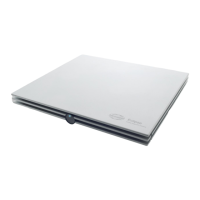Eclipse Additional Information Page 78
3.18 AMLR (if included in your license)
AMLR has the potential to offer a more complete picture of the status of the auditory system and can be
used to help determine the degree of hearing loss. The most common neurological use of the AMLR is for
the assessment of the functional integrity of the auditory pathway above the level of the brainstem in cases
with suspected lesions and for the assessment of nonorganic hearing loss.
3.18.1 Protocol settings for AMLR
The test parameters are set to highlight the subcortical regions (Na) and Pa components occurring around
18-80ms.
An AMLR should be measured using traditional ABR stimuli, such as Toneburst 250Hz-4kHz, stimuli
from the CE-Chirp® stimulus family and custom wave files at an moderate intensity level.
For neuro diagnosis a moderate stimuli intensity below 70dB nHL is appropriate.
For estimation of threshold response amplitude follows the stimuli level as for traditional ABR thresh-
old testing – e.g. starting at a level of 45dB nHL and determine to step up or below 20dB nHL to
threshold.
A slower rate is indicated for younger children or for patients with cortical pathology. Normal rate for
adults is below 7.1 stimuli per second.
Stimuli rates as low as 1 per second or 0.5 per second are required to consistently record the Pb
component.
For information about the test procedure please refer to the relevant quick guide.

